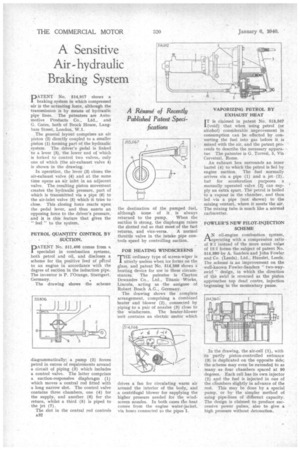The Place of Nickel in the Motor Industry
Page 42

If you've noticed an error in this article please click here to report it so we can fix it.
THE metal nickel has always been a popular one in connection with the construction and finish of motor vehicles. At first it was mainly used in the form of plating, but now it is employed for a large variety of purposes, chiefly, perhaps, in the production of high-quality steel.
The world consumption of nickel for various purposes is of interest. Steel absorbs 60 per cent., nickel-cast iron 3 per cent., nickel-iron alloys 1 per cent., nickel-copper alloys and nickelsilvers 14 per cent., nickel-brass, bronze and aluminium-alloy castings 2 per cent., and electro-deposition 6 per cent.
In this country the motor industry consumes large quantities of 1 per cent. nickel case-hardening steel in place of the plain carbon steel formerly used for such parts as gudgeon pins and camshafts, as it possesses greater tensile strength and higher shock resistance. Increasing use is also being made of nickel austenitic steels for exhaust valves, the nickel content ranging from 8 per cent. to 20 per cent. ,In some is36 cases, the thickness of nickel plating has been increased as much as 50 per cent.
The use of chromium-nickel stainlesssteel trim is rising, whilst nickel additions are made to straight chromium steels to improve their welding characteristics.
In the search for resistance to corrosion, much success has been attained in the employment of NiResist cast iron for liners, and even for exhaust manifolds, Piston-ring-groove wear in light-alloy pistons ha-; been largely overcome by using inserts of NiResist iron, which material matches the expansion properties of the alloy. a is said that some 40 builders of engines are using these pistons as standard, or experimenting with them. The units include oil engines with bores as small as 3 ins.
In Italy, two tractor manufacturers have adopted 1.5 per cent, nickel iron for cylinders, whilst steel containing 1.8 per cent, nickel and 1 per cent. chromium is specified for other important parts. In America, as in other countries, high-grade nickelalloy steels are employed in commercial vehicles, tractors and industrial trucks.
In plating, the technique of producing bright deposits without grinding or buffing has become widely established, and built-up nickel deposits are now commercial practice in this country and are finding a place in America.
Fine-grained nickel-molybdenum steels respond especially well to flamehardening, as applied to such parts as gears, and expansion in the use of the nickel-iron alkaline type storage battery is occurring.
In England and France the position of nickel steels has been maintained and, in some cases, the nickel content has been raised. On the other hand, curiously enough, in the U.S.A., for private cars there has been a tendency to use lower alloy steels, but corrosionresistant, nickel-copper steels are employed increasingly for lorry bodies, tipping wagons, trailers and tankers.












































































